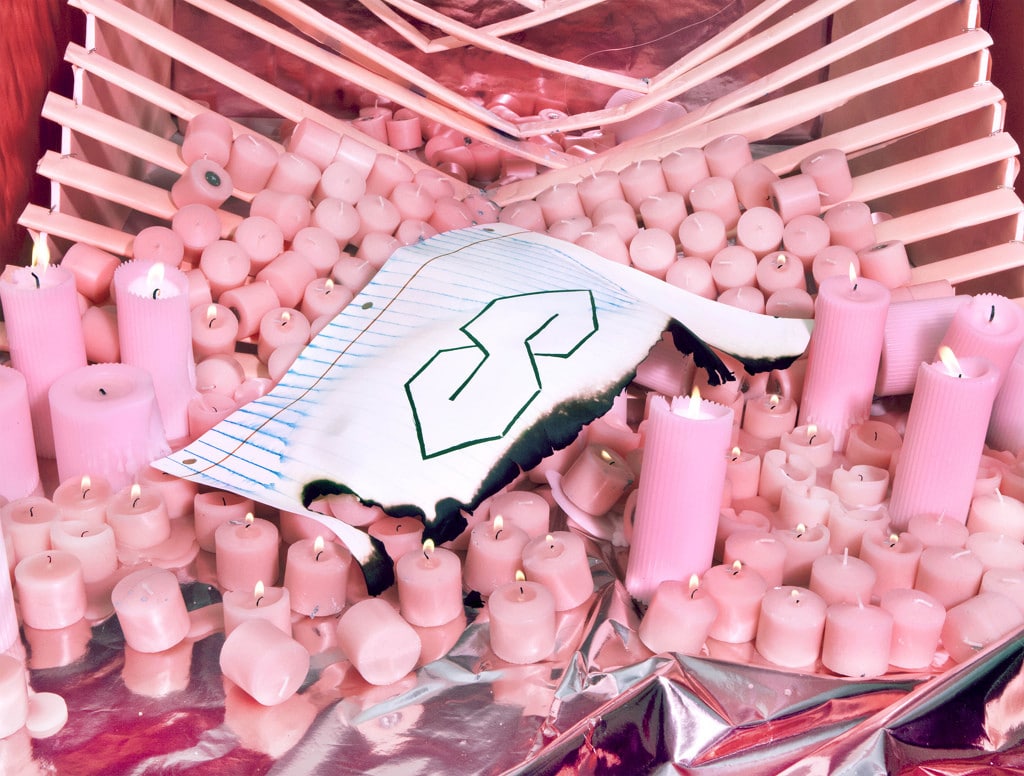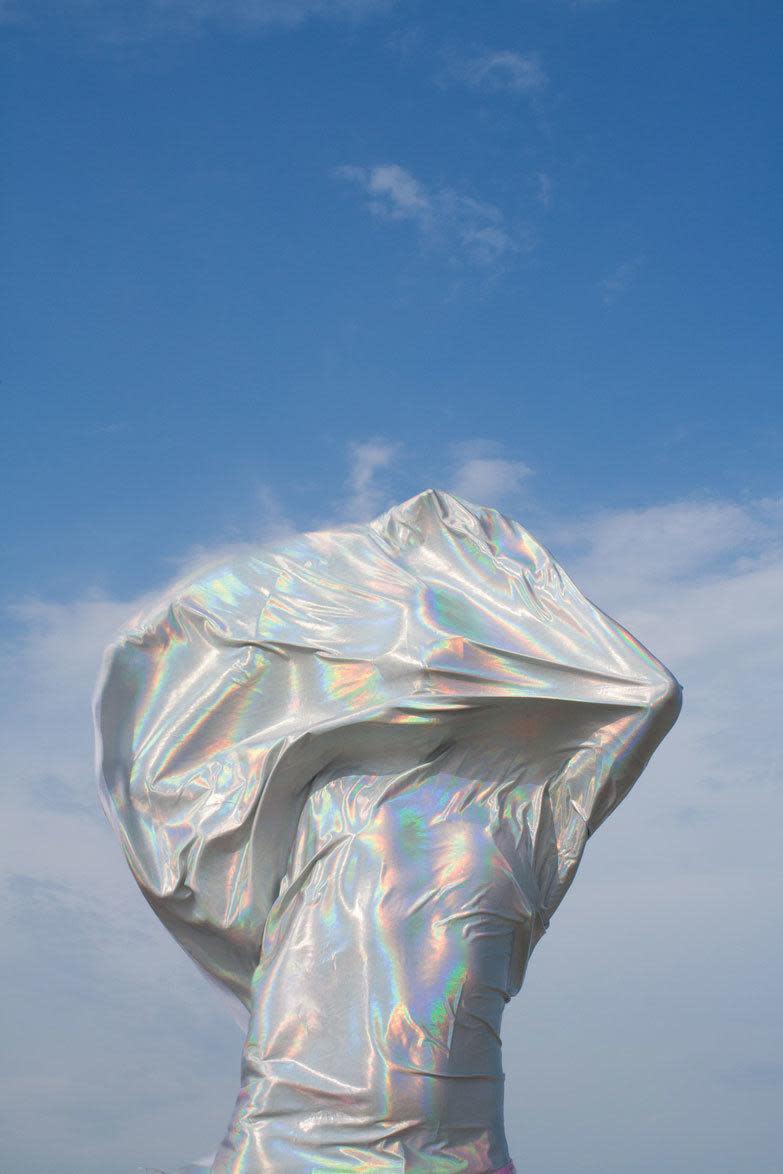Elizabeth Renstrom desayuna, come y cena fotografía. Como editora fotográfica de Vice Magazine, se ocupa a diario de envíos y encargos. "Diría que la mitad del tiempo estoy haciendo encargos para la revista o Vice.com y la otra mitad del tiempo me reúno con fotógrafos, proceso imágenes y voy a los rodajes para supervisar y comprobar", nos dijo. Básicamente, si quieres aparecer en Vice -impreso o web-, tu trabajo tiene que pasar por ella.
Antes de unirse a Vice, Renstrom trabajó para Time Magazine, The New Yorker, Marie Claire, Nylon y Refinery29. Su propio trabajo es brillante, texturizado y lleno de detalles inesperados. Como la mayoría de los profesionales creativos, Renstrom se esforzó mucho para convertirse en una voz destacada en el mundo de la fotografía.
"Fui a Parsons en Nueva York y me centré principalmente en las bellas artes y el retrato enfocado al estudio", dijo. "Cuando estaba a punto de graduarme, ya hacía esculturas babosas y trabajaba en American Apparel. Estaba un poco aterrorizada, pero me dediqué a hacer trabajillos para pagarme las fotos".

de la serie "Trozos de cera" de Elizabeth Renstrom
"No tenía mucha idea de lo que implicaba la edición fotográfica, pero tuve suerte y conseguí unas prácticas en la revista Time. Aquellas prácticas me enseñaron mucho sobre cómo está estructurado el departamento fotográfico de una revista y lo que significa contar con grandes imágenes que apoyen e impulsen el periodismo. Gracias a ello, me inicié y fui dando tumbos por un par de revistas, siempre haciendo reportajes editoriales".
Este verano, Renstrom publicó su primer número de fotos para Vice. La publicación, exclusivamente femenina, cuenta con un amplio abanico de talentos, como Izumi Miyazaki, Feiyi Wen, Jill Freedman, Atong Atem, Wiktoria Wojciechowska y Lorna Simpson. Cuenta las historias de las mujeres soldado de Israel, las inmigrantes africanas de Australia y los "juguetes sexuales altamente improvisados".

"Fue una experiencia increíblemente gratificante", dijo Renstrom sobre El número de fotos 2016. "Cuando Salí en el número de fotos de 2012Significaba mucho para mí. Fueron la primera revista que publicó mi trabajo de estudiante y nunca me abandonó. Fue una gran oportunidad para una novata como yo y siempre he querido conceder la misma oportunidad a los fotógrafos."
¿Por qué un número exclusivamente femenino? "Pensé mucho en ello cuando empecé en mi puesto, y también pensé en lo especial que era para Vice tener una editora de fotografía y una editora de fotografía. redactor jefe. Me pareció bien proponer por primera vez un número fotográfico exclusivamente femenino. Cuando se aprobó la idea, empecé a recopilar proyectos y a pensar a quién asignar el material original. No podría estar más orgullosa de las mujeres que me dedicaron su tiempo y sus proyectos para este número. Sólo desearía haber podido poner más, con más páginas".
Aquí tienes sus consejos para conseguir que tu trabajo aparezca en Vice:


Fotos de Izumi Miyazaki de The Photo Issue 2016
1. Rodar proyectos personales
"Animo a la gente a que me enseñe sus proyectos personales antes de enseñarme lo que han rodado editorialmente. Para hacerme una idea de cómo voy a aplicar tu visión a una historia, necesito saber qué es lo que más te interesa. Es entonces cuando se producen los emparejamientos mágicos.
"Si me enseñas una serie personal en la que has estado trabajando sobre payasos jubilados, seré el acosador que recuerde que te gustan los payasos y con suerte te pondré una historia sobre la reunión de los Juggalos o el circo. Recordaré lo que haces si es una perspectiva nueva que no he visto antes".

Foto de Wiktoria Wojciechowska de The Photo Issue 2016
2. Evita el "periodismo paracaidista"
"Me gusta mucho cuando puedo decir que el sujeto y el fotógrafo se sentían cómodos el uno con el otro. No me gusta el periodismo paracaidista y no me gusta explotar a la gente innecesariamente. Intento ser sensible con las contrataciones, por lo que una toma "ideal" para Vice, en mi mente, es aquella en la que el fotógrafo obtuvo imágenes de las que se sintió orgulloso y que comunicaban la historia de forma honesta."


Fotos de Jessica Pettway de The Photo Issue 2016
3. Los editores tienen favoritos, pero no dejes que eso te impida enviar algo diferente
"Admito que tengo mis favoritas: me encantan las naturalezas muertas interesantes y las interpretaciones extravagantes de la vida cotidiana. Sin embargo, también me encanta cuando un fotógrafo me muestra algo que normalmente no experimentaría debido a mi lugar de origen y a mis propias experiencias. Tengo una gran plataforma que ofrecer a los fotógrafos y me gusta destacar cosas que podrían utilizar esa amplia audiencia".

Fotos de Fryd Frydendahl de The Photo Issue 2016
4. Recoge un ejemplar de la revista para ver qué buscan
"Sinceramente, coge cualquier revista de septiembre de 2015 a agosto de 2016 y verás algunas de mis cosas favoritas. La reciente cobertura de Tamara Abdul Hadi sobre una cadena de barberías en el Pequeño Sudán de Tel Aviv y las imágenes originales de Sue de Beer de hombres lobo, puritanos y zombis creadas con guías de maquillaje de los años 50. También me encanta la exploración de Zak Krevitt de cultura del cachorro fetichista y la serie de Gina Nero en Cuba. Hay demasiado".

Fotos de Gina Nero de The Photo Issue 2016
5. No más fotografía de "estilo de vida
"Incluso puedo encontrar el humor en la fotografía de stock divertida, pero lo único que me irrita es la fotografía de estilo de vida o cualquier cosa que venda un "estilo de vida" para una marca. Qué asco".
Visita el portfolio online de Elizabeth Renstrom aquí y recorre más fotografías de antivicio en vice.com/photo. Foto de cabecera de Robert Hickerson












